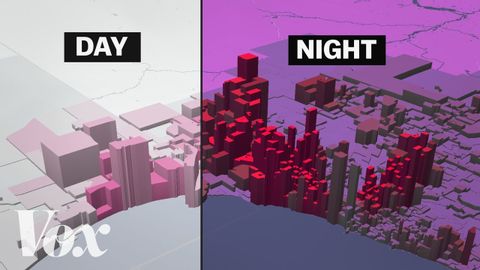American segregation, mapped at day and night
joey joey が 2021 年 05 月 18 日 に投稿  この条件に一致する単語はありません
この条件に一致する単語はありませんUS /ˈkruʃəl/
・
UK /'kru:ʃl/
US /ˈslaɪtli/
・
UK /ˈslaɪtli/
US /ˌɪntɚˈækt/
・
UK /ˌɪntər'ækt/
US /ˌrɛprɪˈzɛnt/
・
UK /ˌreprɪ'zent/
エネルギーを使用
すべての単語を解除
発音・解説・フィルター機能を解除

